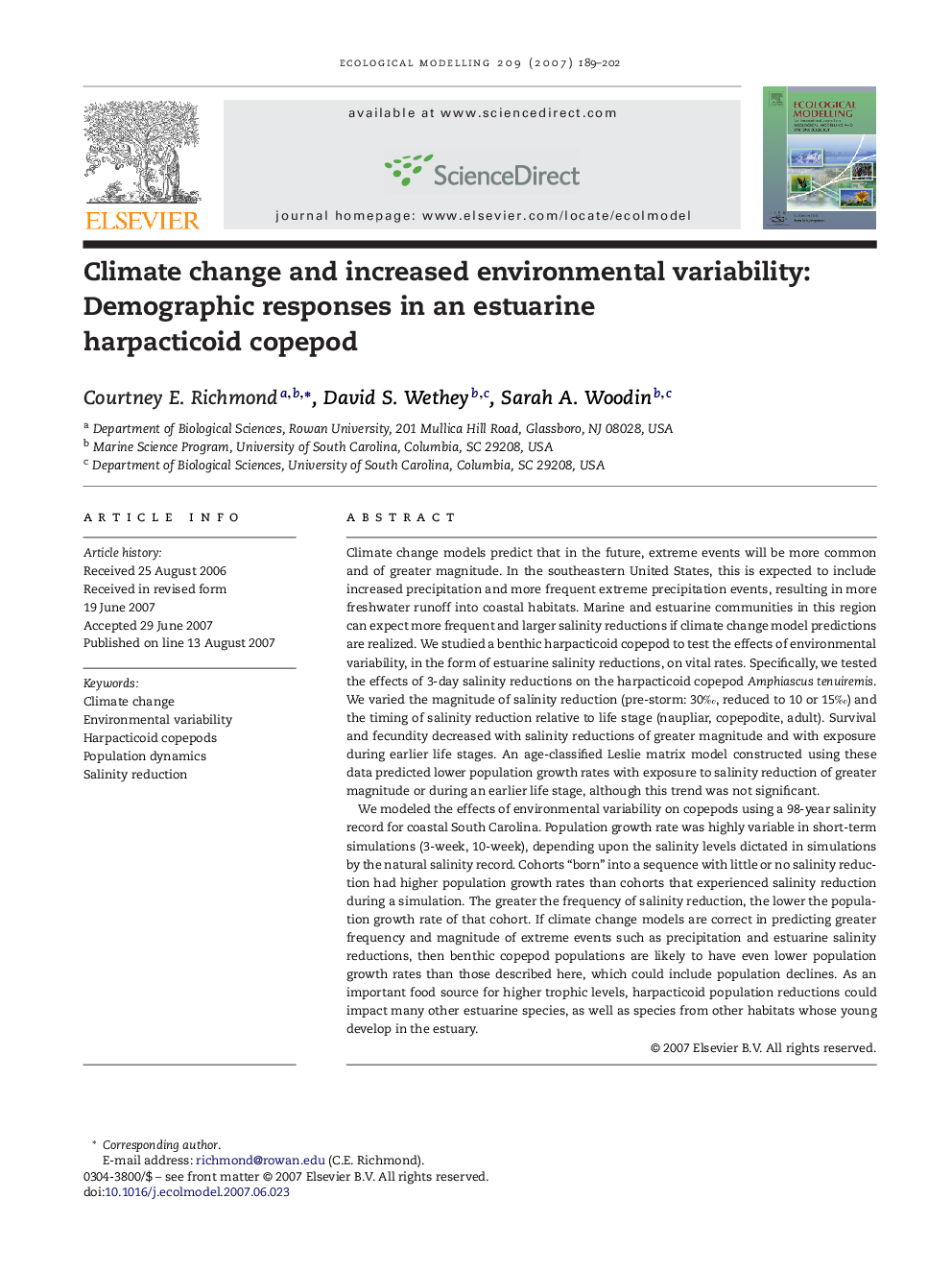| کد مقاله | کد نشریه | سال انتشار | مقاله انگلیسی | نسخه تمام متن |
|---|---|---|---|---|
| 4378522 | 1617541 | 2007 | 14 صفحه PDF | دانلود رایگان |

Climate change models predict that in the future, extreme events will be more common and of greater magnitude. In the southeastern United States, this is expected to include increased precipitation and more frequent extreme precipitation events, resulting in more freshwater runoff into coastal habitats. Marine and estuarine communities in this region can expect more frequent and larger salinity reductions if climate change model predictions are realized. We studied a benthic harpacticoid copepod to test the effects of environmental variability, in the form of estuarine salinity reductions, on vital rates. Specifically, we tested the effects of 3-day salinity reductions on the harpacticoid copepod Amphiascus tenuiremis. We varied the magnitude of salinity reduction (pre-storm: 30‰, reduced to 10 or 15‰) and the timing of salinity reduction relative to life stage (naupliar, copepodite, adult). Survival and fecundity decreased with salinity reductions of greater magnitude and with exposure during earlier life stages. An age-classified Leslie matrix model constructed using these data predicted lower population growth rates with exposure to salinity reduction of greater magnitude or during an earlier life stage, although this trend was not significant.We modeled the effects of environmental variability on copepods using a 98-year salinity record for coastal South Carolina. Population growth rate was highly variable in short-term simulations (3-week, 10-week), depending upon the salinity levels dictated in simulations by the natural salinity record. Cohorts “born” into a sequence with little or no salinity reduction had higher population growth rates than cohorts that experienced salinity reduction during a simulation. The greater the frequency of salinity reduction, the lower the population growth rate of that cohort. If climate change models are correct in predicting greater frequency and magnitude of extreme events such as precipitation and estuarine salinity reductions, then benthic copepod populations are likely to have even lower population growth rates than those described here, which could include population declines. As an important food source for higher trophic levels, harpacticoid population reductions could impact many other estuarine species, as well as species from other habitats whose young develop in the estuary.
Journal: Ecological Modelling - Volume 209, Issues 2–4, 16 December 2007, Pages 189–202